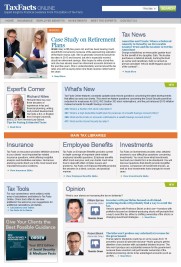Almost half of tax returns still due in remaining 25 days to file!
Posted by William Byrnes on March 21, 2014
The IRS announced in Newswire 2014-32 that almost half of the tax returns expected to be filed for the year 2013 had yet to be filed by March 14, 2014. How many returns will be filed in this last 25 day period? About 70 million tax returns of the total expected 149 million returns of 2013! If half of these outstanding tax returns are filed with the assistance of a tax preparer, that’s 35 million potential clients in the past 25 days of the tax season! Not a bad profession to be in!
Over the next 25 days this blog will contain many articles for small business owners on taking certain deductions and obtaining various tax credits that allow a small business owner or entrepreneur to minimize the tax imposed on the trade or business and thus maximize the business’ after-tax return.
The IRS reminds small business owners and entrepreneurs of three tax facts that may impact the outstanding 2013 return.
Tax Fact 1: Optional safe harbor method to determine the business use of a home deduction. Also known as the simplified option for claiming the home office deduction, beginning in 2013, taxpayers can use the optional safe harbor method to determine the deduction for the business use of a home.
If a taxpayer works from home, then it may be possible for the taxpayer to claim the home office deduction. However, in years past this home office deduction has been rather complicated to calculate.
1. Generally, in order to claim a deduction for a home office, a taxpayer must use a part of your home exclusively and regularly for business purposes. Also, the part of your home used for business must be:
- the principal place of business, or
- a place where the taxpayer meets clients or customers in the normal course of business, or
- a separate structure not attached to the home. Examples might include a studio, garage or barn.
What clearly does NOT qualify for a home office deduction? By example, a taxpayer sets up a computer in her bedroom on a dresser that she uses for personal emails and for keeping her business records. In the dresser drawers are pens, paperclips, some receipts, as well as hair clips and some pieces of jewelry. The IRS isn’t going to allow a home office deduction based on that computer on that dresser.
The taxpayer may be able to use the simplified option to claim the home office deduction instead of claiming actual expenses. Under this method, the taxpayer multiplies the allowable square footage of the office area by a prescribed rate of $5. The maximum footage allowed by the IRS is 300 square feet. The deduction maximum limit using this method is thus $1,500 per year.
If the taxpayer is self-employed and chooses the actual expense method, then the taxpayer should use Form 8829, Expenses for Business Use of Your Home, to calculate the amount of the home office deduction. The taxpayer claims the deduction on Schedule C, Profit or Loss From Business, whether using the simplified or actual expense method.
If the taxpayer is an employee, then additional rules apply to claim the deduction. For example, in addition to the above tests, the business use must also be for the employer’s convenience. By example: a “work from home” arrangement.
Tax Fact 2: Standard mileage rate. Beginning in 2013, the standard mileage rate for the cost of operating a car, van, pickup, or panel truck for each mile of business use is 56.5 cents per mile.
Tax Fact 3: Additional Medicare Tax. Beginning in 2013, a 0.9% Additional Medicare Tax applies to Medicare wages, railroad retirement (RRTA) compensation, and self-employment income that are more than:
- $125,000 if married filing separately,
- $250,000 if married filing jointly, or
- $200,000 if single, head of household, or qualifying widow(er) with dependent child.
Medicare wages and self-employment income are combined to determine if a taxpayer’s income exceeds the threshold. RRTA compensation should be separately compared to the threshold.
Due to a number of recent changes in the law, taxpayers are currently facing many questions connected to important issues such as healthcare, home office use, capital gains, investments, and whether an individual is considered an employee or a contractor. Financial advisors are continually looking for updated tax information that can help them provide the right answers to the right people at the right time. This brand-new resource provides fast, clear, and authoritative answers to pressing questions, and it does so in the convenient, timesaving, Q&A format for which Tax Facts is famous.
“Our brand-new Tax Facts title is exciting in many ways,” says Rick Kravitz, Vice President & Managing Director of Summit Professional Network’s Professional Publishing Division. “First of all, it fills a huge gap in the resources available to today’s advisors. Small business is a big market, and this book enables advisors to get up-and-running right away, with proven guidance that will help them serve their clients’ needs. Secondly, it addresses the biggest questions facing all taxpayers and provides absolutely reliable answers that help advisors solve today’s biggest problems with confidence.”
“Robert Bloink, Esq., LL.M., and William H. Byrnes, Esq., LL.M., CWM®—are delivering real-life guidance based on decades of experience. The authors’ knowledge and experience in tax law and practice provides the expert guidance for National Underwriter to once again deliver a valuable resource for the financial advising community,” added Rick Kravitz.
Anyone interested can try Tax Facts on Individuals & Small Business, risk-free for 30 days, with a 100% guarantee of complete satisfaction. For more information, please go to www.nationalunderwriter.com/TaxFactsIndividuals or call 1-800-543-0874.


Leave a comment